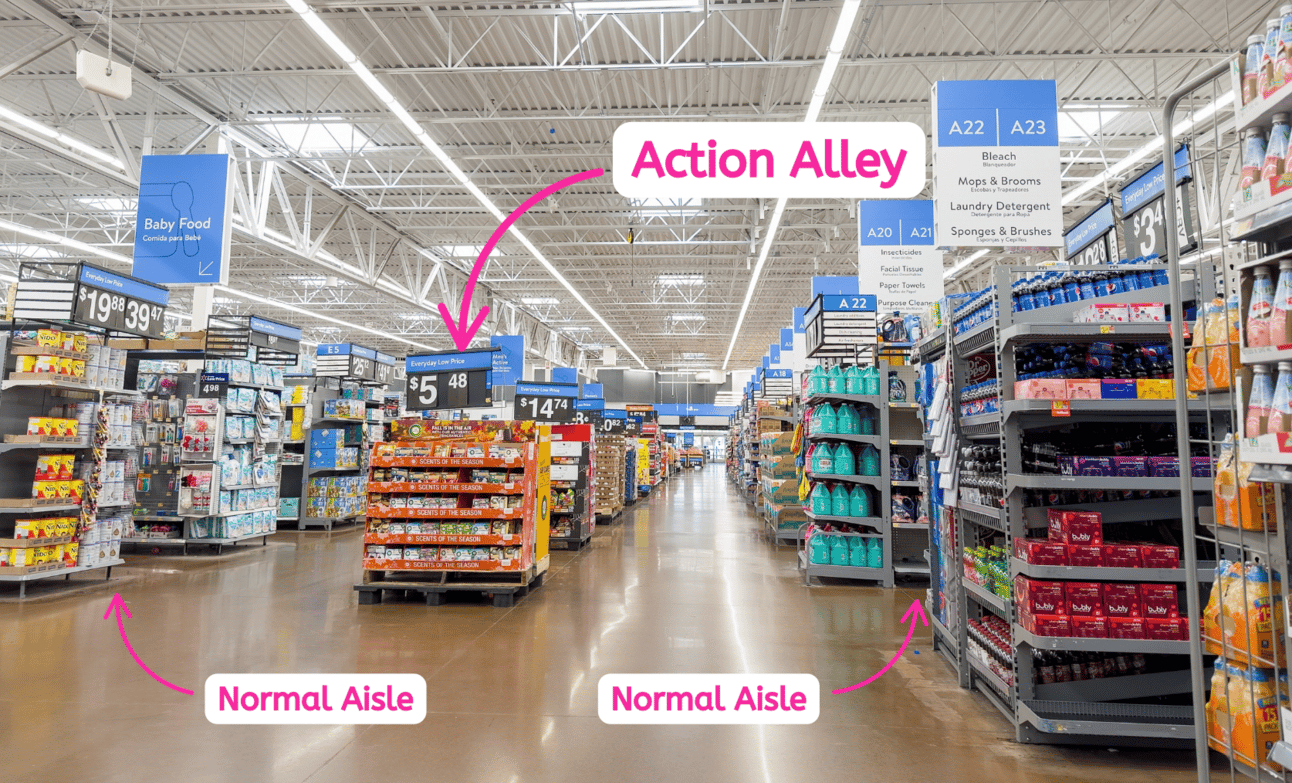- Choice Hacking
- Posts
- How Walmart uses this psychology principle to make $600B a year
How Walmart uses this psychology principle to make $600B a year

When people are on autopilot, it’s 100x harder to get their attention (and influence them).
Walmart is the world’s biggest retailer, selling $600B+ of merchandise every year.
They offer rock-bottom prices, but to make those prices deliver profit for the business, Walmart has to get customers to spend more and shop more often.
One way they do it is by disrupting buyer habits in-store.
When we’re locked into a habit, we do things without thinking.
You just sort of flick your brain off and follow your normal routine.
But Walmart knows how to interrupt our Behavioral Scripts to get us to pay attention.
👉️ Behavioral Scripts describe the things we expect to happen in any given situation and their order, based on our routines and habits.
For example, if you go into a restaurant you don’t expect them to give you the dessert menu first.
You expect to order your drinks, starter, main, then your dessert at the end.
We follow the “Restaurant” Behavioral Script every time, because it’s happened that way so many times before.
But Walmart knows that when you’re locked into a routine, it’s really hard to get you to pay attention to new products or venture off your shopping list.
That’s why they created an area in the store called Action Alley.

Original Image Source: Jammy Jean - stock.adobe.com
Action alley is a series of pallets with sale products that sit right in the middle of the aisles to disrupt buyers.
Action Alley interrupts people’s normal behavioral shopping scripts because it’s full of product sitting where no product should be.
This break in expectations wakes shoppers up and they pay attention, browse some new things, and hopefully (for Walmart) stick an extra item in their cart.
Behavioral Scripts aren’t just useful for big retail brands like Walmart. I actually used this same idea to help one of my coaching clients.
DV runs a financial advice firm in a crowded market.
He is great at his job and has a unique niche, but his marketing looked just like everyone else's:
Websites with stock photo handshakes, buildings, and graphs that only go up
Emails promising "worry-free retirement" and "financial security"
His potential clients just didn’t notice his marketing because it wasn’t distinct or different from any other financial advisor…
DV’s marketing was like wallpaper - seen but not noticed.
So we decided to break the unspoken psychological rules of financial services marketing.
Some of the things we tweaked about DV’s marketing included:
Replacing boring stock photos with simple drawings of DV’s professional insights so people could see how he thinks
Experimented with new frames for his discovery calls and support,
making them more about understanding his clients’ emotional goals, mental models and psychological barriers regarding money.
After a few months of working this new marketing system, DV was booked out completely.
And for the first time since starting his business, he had a waitlist.
Not because we changed his services or his prices.
But because we broke through the habits and routines that made his marketing invisible.
Walmart’s Action Alley is a powerful marketing psychology strategy, but some executives felt like it made the stores look cluttered.
So they removed it in 2009 during a big store refresh initiative.
But guess what happened?
They lost so many sales when they took out Action Alley, that it was back less than a year later.
Because here’s the truth…
Nothing matters more in business than understanding your buyers’ psychology.
Not a pretty store, not fancy ads, and not how many social media followers you have.
👉️ That’s why tomorrow I’m sharing an invite to my NEW COURSE where I’m sharing the 6 critical Mental Models that will transform how you create marketing, strategy, pricing, offers, and positioning.
So you can better understand your buyers’ brains and get on the path to 2x marketing effectiveness (so sales and profit can 2x, too).
Until next time,
Jen
 | Jen Clinehens, MS/MBA Founder & Managing Director of Choice Hacking Helping you create 2x more effective marketing with psychology and behavioral science (so sales and profit can 2x, too). |